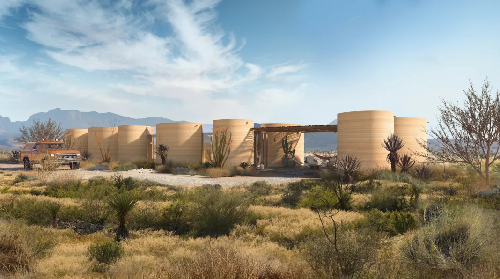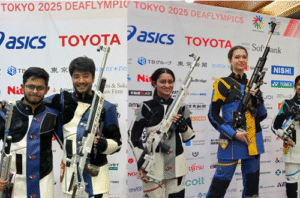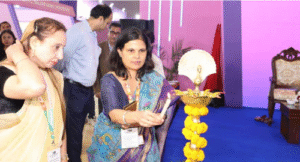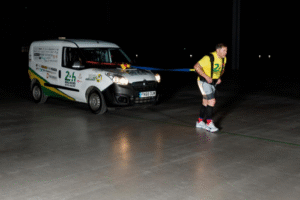In a fusion of cutting-edge technology and minimalist desert aesthetics, construction is underway on what is being hailed as the world’s first 3D-printed hotel. Located on a sprawling property in the Texas desert, the project is a collaboration between hospitality visionary Liz Lambert, who founded the existing “nomadic” campground hotel El Cosmico, and ICON, a leader in large-scale 3D-printing technology.
The ambitious expansion of El Cosmico, designed by the world-renowned architecture firm Bjarke Ingels Group (BIG), will feature 43 new 3D-printed hotel units and 18 residential homes. The project is a showcase for the architectural possibilities unlocked by 3D printing, with the designs featuring a variety of fluid, curvilinear shapes, including domes, arches, and vaults—forms that are difficult and expensive to achieve with traditional construction methods.
The structures are being built using ICON’s proprietary “Vulcan” 3D printer, a massive machine that extrudes a low-carbon cement mixture called “lavacrete” layer by layer. The material is pigmented to blend seamlessly with the surrounding landscape of the Chihuahuan Desert, making the new buildings appear to emerge organically from the land itself.
Beyond the unique aesthetics, the project highlights the potential for sustainable and resilient construction in harsh environments. The thick, solid walls created by the 3D printer provide excellent thermal mass, which helps to keep the interiors cool during the day and warm at night, reducing the need for traditional heating and cooling systems. The construction process also generates significantly less waste than conventional building.
While the current El Cosmico, known for its mix of trailers, yurts, and teepees, will remain open until 2025, the new 3D-printed development is scheduled for completion in 2026. This pioneering project is not just building a hotel; it is setting a new standard for sustainable and innovative architecture, demonstrating how technology can be used to create beautiful, functional, and eco-friendly structures in even the most challenging environments.







